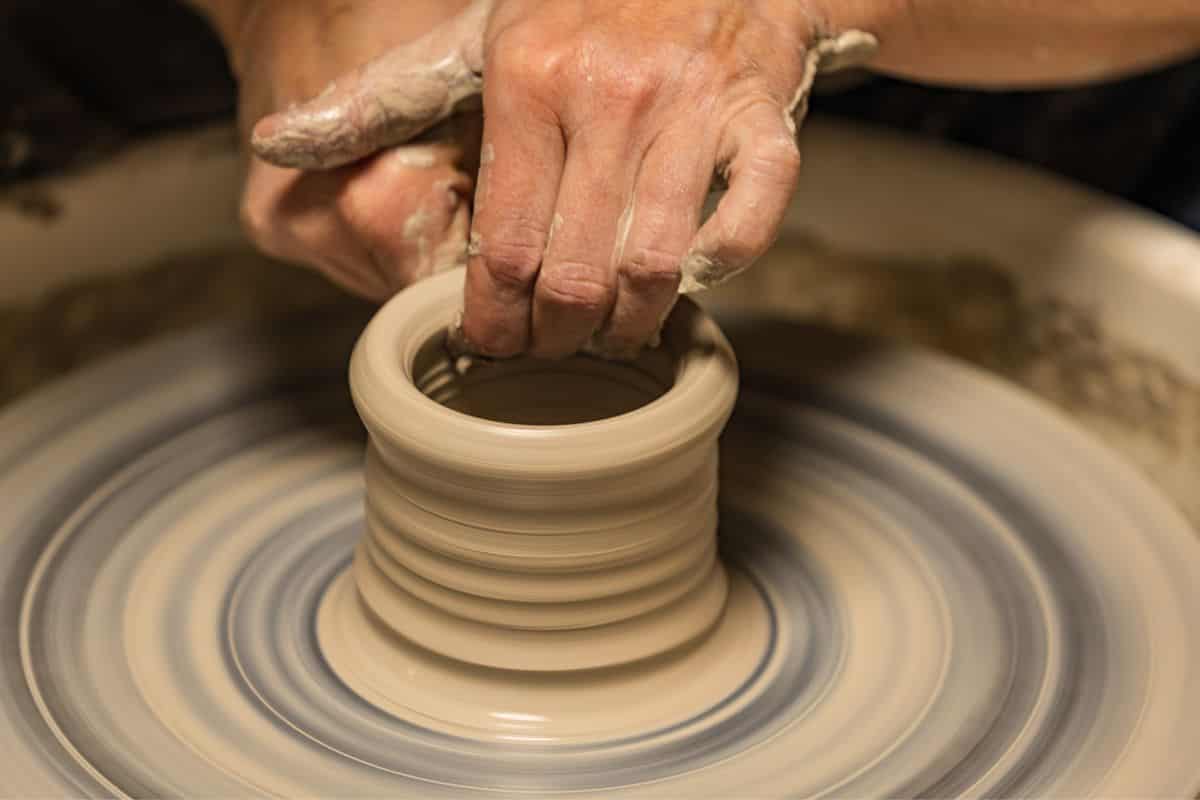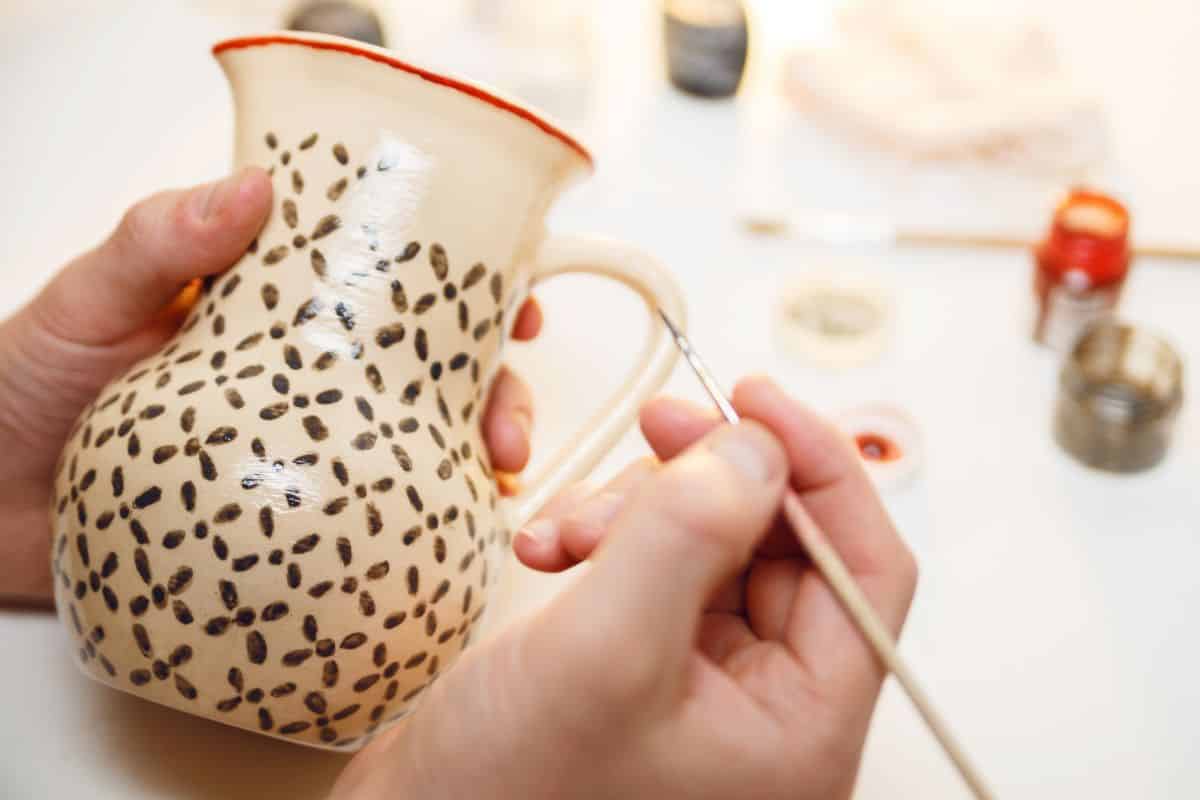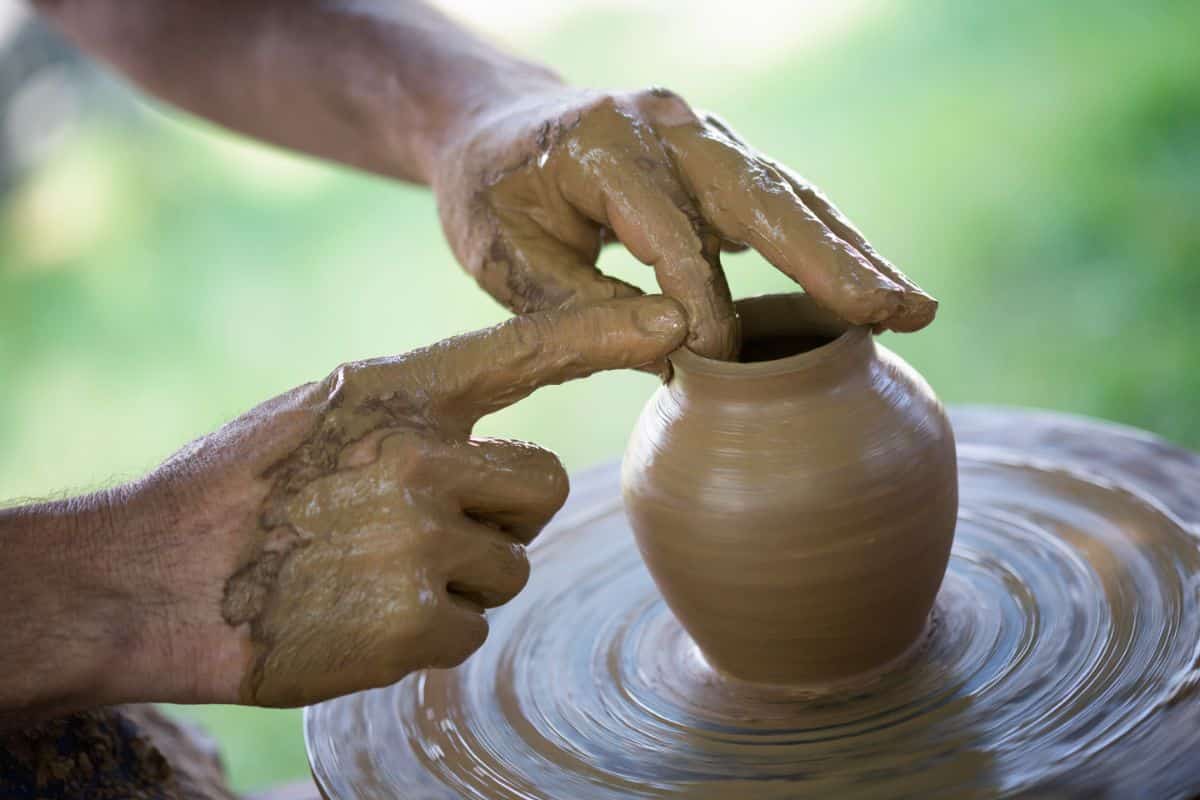Ceramic art and pottery is one of the oldest crafts in the world. People have been creating ceramic sculptures but also traditional household items, like plates and pots, for thousands of years.

Throughout human history, creative people have made good use of clay and pottery materials to create beautiful ceramics.
This has brought forth a number of wonderful clay artists over the centuries who let their mark not just on their ceramics but also the traditional way of making artistic ceramics.
From Victor Spinski and Robert Arneson to Greyson Perry, ceramic art of the 20th century was shaped by individuals as well as some famous ceramic manufacturers such as Wedgwood.
In this article, we take a closer look at the life of ceramist Robert Louis Blatherwick.
The Life Of Robert Louis Blatherwick
Robert Louis Blatherwick was born in Lincoln (Lincolnshire, UK) in 10920. At age 14, he went to study at the Lincoln School of Art.
Then he received a scholarship and joined the famous ceramics manufacturer Wedgwood Pottery in Stoke on Trent.
During the second World War, he managed Winchcombe Pottery for his friend Michael Cardew for a while.
After the war, he moved to St Ives (Cornwall, UK) to create pots for Bernard Leach.
After a while, he returned to Lincoln School of Art for a teaching position. While still making a large range of earthenware and stoneware artwork, he taught many famous artists, such as Gordon Baldwin.
However, Blatherwick resigned in 1967 and set up his own pottery which also included a gallery. This was just outside of Lincoln, in Reepham.
At that time, Blatherwick was inspired by the principles of Winchcombe and St. Ives, and he fully focused his work on creating earthenware.
Many manufacturers of the time found stoneware to be more profitable at the time, which meant that earthenware almost disappeared.
However, Blatherwick felt that he could do so much more with earthenware, and that this type of ceramics had a lot more potential.
Therefore, he spent most of his time creating thrown or slab artwork, including jewelry, domestic ware, tiles and sculptures.
These ceramic pieces were often commissioned by clients from all over the world. Blatherwick’s designs, glazes and bodies were popular but they also had critics.
As a member of the Craftsmen Potters’ Association, he experimented with earthenware and slipware glazes, and this also meant that many of his experimental works were not marked.
The running and organization of his studio and gallery was mainly down to Blatherwick’s wife Marjorie.
The couple had three children together, including Susanna Blatherwick who recorded her father’s work and life.
The studio and gallery were running well and it generated an income the whole family could live on.
Robert Louis Blatherwick worked on paintings, sculptures and pottery until he died in 1993.
The Work Of Robert Louis Blatherwick
While Blatherwick put out a relatively large amount of work throughout his lifetime, he is mostly unknown to ceramic historians and art history.
Most of what is known about him was recorded by his daughter Susanna Blatherwick.
However, his ceramic artwork was reasonably well known during Blatherwick’s lifetime, both abroad and locally.
His daughter attributes the lack of recognition of his work to the absence of documentation and archives.
Also, no scholars were looking at the complexity in Blatherwick’s production process which meant that his art disappeared into obscurity.
Blatherwick did not always go with traditional conventions at the time, but he was also not an artist who worked against the different trends and fashions at the time.
One particular trend that he did not follow in his work was the focus on stoneware which was dominant and popular with potteries, ceramic manufacturers and consumers at the time.
Blatherwick however focused on creating high-fired earthenware which quickly became unfashionable to the mass market consumer.
Nonetheless, Blatherwick was a successful artist, also because he managed to bring up his family on an income which was solely derived from the sale of his ceramic works.
The fact that he had a large enough income to sustain himself and a family with his artwork was unusual at the time, and it is also not common today.
It sheds a light on the business and financial side of the studio pottery movement at this time which is very little known.
The Legacy Of Robert Louis Blatherwick
While so little is known about Robert Louis Blatherwick, it is thanks to his daughter Susanna Blatherwick that we get a little glimpse today of what his life as well as his ceramic work was like.
She wrote an extensive thesis on her father’s life and work which also covers the house where he lived. The thesis is called “Archeology of the House. Site. Object. Context – Interpreting a Collection: A Study of the Life and Work of Robert Louis Blatherwick (1920-1993)”.
She wrote the text in response to requests from historians who wanted to understand why her father’s legacy was not better known in the ceramics world, although he worked for some of the best known British studio potters in the 20th century.
She found that the family records were a valuable resource which recorded all his work and areas of interest to Robert Louis Blatherwick.
Susanna Blatherwick also discovered that there was a clear preference by the studio pottery world for stoneware which also resulted in discriminating behavior towards ceramic artists who preferred to work with earthenware.
Her work sheds a new light on the recorded history of these pottery studios and their policies.
Final Thoughts
Although Robert Louis Blatherwick is largely unknown amongst historians today, he was well known for his excellent earthenware sculptures, pots and other artwork during his lifetime.
He kept a comprehensive archive of his own work at his family home which recorded different objects and approaches to his work.
Many of the things that are known about Blatherwick today are thanks to the meticulous archive work of his daughter Susanna.








